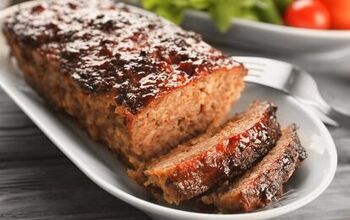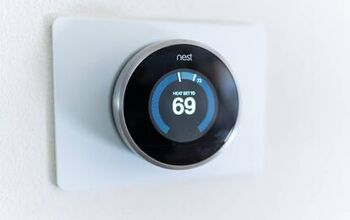How To Store Broccoli In The Fridge And Freezer (Do This!)

If there is one vegetable that’s a classic, all-American dinner table favorite, it’s broccoli. The cruciferous vegetables are some of the most widely eaten, not to mention the most detested by children. If you’re like many frugal home chefs, you will want to store broccoli for as long as possible. The question, of course, is how you can do that without making your broccoli soggy or brown.
Storing broccoli is best done through one of the following methods:
- Freezing
- The Open Air Method
- The Wrapped Plastic Method
- The Container Method
- Leftovers
Understanding which method works well makes all the difference in the world when it comes to the quality of your food. So, let’s talk about storing broccoli. shall we?
How Long Does Broccoli Last?
Believe it or not, broccoli doesn’t last as long as you think it does. Most broccoli storage methods will have the plant last for around seven days. If you use a more thorough method and have ideal conditions in your refrigerator, you might be able to get it to squeeze up to 10 days out of it. Frozen broccoli can keep for up to six months.
How To Choose Good Broccoli
The start of your broccoli storage process comes with picking the right plant. Broccoli that is bright green, firm, and with a stem that looks like it was literally just cut off the plant. Avoid broccoli that has a lot of yellow tips, black spots, or an old, woody stem cut. Those are signs of aging and show that the broccoli won’t last long.
One thing that you need to watch out for is limp broccoli. Limp broccoli is broccoli that’s gone bad. If it wobbles when you shake it around, it’s no good. Don’t eat that!
What Happens If You Eat Bad Broccoli?
Honestly? Not much. Assuming that there isn’t mold on your broccoli, the only thing that will happen is that it will not taste the same and its nutritional value will be lessened. It will be limp, might be hard to chew, and might not be the best to prepare food with. Of course, if your broccoli is infested with mold, that’s a different story.
Mold-infested food can trigger a severe allergy attack in people. This means that you might get sick, break out into a rash, and at the very worst, go into an anaphylactic shock.
How To Store Broccoli
Broccoli is a vegetable that has a lot of contention when it comes to peoples’ theories on the best ways to store them. We’ll let you choose the best option for yourself below.
Freezing Your Broccoli
Like with most other vegetables, including asparagus, the best way to freeze your broccoli is to blanch it first. Here’s how to do it:
- Chop your broccoli up into bite-sized pieces. This will make things easier.
- Bring water to a boil, and drop the broccoli in. Leave it to boil for a couple of seconds.
- After about 5 to 10 seconds, place the broccoli pieces in a tub of icy water. Let them chill there.
- Remove the broccoli and dry it. You can pat the pieces dry with a paper towel or use a salad spinner.
- Put the broccoli on a tray and freeze it. After a couple of hours, you can transfer the broccoli to a plastic bag for easier storage.
The Open Air Method
Broccoli is one of those few veggies that does not do well in airtight containers. A good way to store it is in a fridge, after being patted dry from any water mist that may have accrued on it. Then, you can place it in the crisper section. It’ll last for 7 to 10 days at most.
Another similar method that could be considered “open-air” is to loosely wrap the broccoli in a slightly damp paper towel, then place it on a shelf in the fridge. The damp towel helps add moisture without taking too much space.
The Wrapped Plastic Method
Let’s say you got your broccoli from a store and it was dry as a bone. Great! Your broccoli will still need some airflow, but this means that you can store it in a plastic bag if you want to. To make the plastic bag more amenable to broccoli storage, you can poke a couple of holes in it using a knife.
The Container Method
It’s important to point out that broccoli should not be stored in Tupperware-style containers, since they block out airflow. No, what we’re going to do is suggest the cilantro style of fridge container. This works best with long-stemmed broccoli. Here’s how to do it.
- Place broccoli in a mason jar. A small mason jar will suffice.
- Fill the broccoli jar with cold water. Halfway up is enough to make sure that your broccoli won’t wilt as fast.
- Place the jar in the fridge. It should be able to keep for up to 12 days in most situations.
Leftovers
Leftover broccoli (like the broccoli stew you made, or a broccoli soup) can be saved pretty easily. All you have to do is put it in an airtight container, cover it, and place it in the fridge. Assuming you don’t have any shrimp or similarly hyper-perishable foods, you should be able to eat the food for the next two to three days.
How Can You Tell If Your Broccoli Went Bad?
Most people can tell if broccoli went bad at a glance. If you aren’t sure whether or not this veggie went bad, check for these warning signs below:
- The broccoli is covered in black or white spots. Those spots are mold, and that’s a sign that you need to discard the broccoli.
- When you wave the broccoli around, it’s floppy. Does it droop over? Maybe it doesn’t fully stand up on its own? That’s a sign that your broccoli isn’t good to eat anymore.
- Your broccoli has a distinct rotten scent. Most people have smelled rotten broccoli. It almost smells like a compost heap. It’s a distinct smell, and once you whiff it from your broccoli, it’s a sign it’s time to toss it out.
- The broccoli in question has a brown or black stem. Brown stems are a sign that it’s been way too long since they’ve been harvested.
Can You Store Broccoli In Your Pantry?
Honestly, you can for a short period of time, but it’s really not advisable unless your pantry’s temperature is less than 50 degrees Fahrenheit. If you store it at room temperature, your broccoli will be able to last for two, maybe three days at the most. So this is only a good option if you are using your broccoli ASAP.
Moreover, you really shouldn’t leave broccoli at room temperature for more than an hour. (Or at least, that’s food safety standards.) Broccoli crowns that are left out for several hours at a time can grow bacteria and other pathogens that can cause food poisoning. While this is not a matter of rotting or spoilage, it’s still food sanitation that you should know.
Important Tips For Broccoli Storage
While we’ve gone over a lot of things regarding broccoli storage, there are still some things you probably should know. Before you get your next batch of broccoli, read these tips below:
- The yellow tips on your broccoli bunch aren’t rotten, but you don’t want to eat them. They are yellow due to the growing a bitter compound. As a result of the increase in bitterness, yellow florets are rarely ever tasty.
- Keep broccoli away from humidity. Water that directly contacts broccoli is okay. Water in the air? Not so much. Broccoli is sensitive to humidity.
- Also, keep the cooking time short. You can usually cook broccoli to perfection within seven minutes. Cooking any longer can turn your broccoli limp and also reduce the amount of nutrients that you get in your broccoli.
Related Questions
What does it mean if your broccoli turned purple?
This means that your broccoli has a buildup of excess anthocyanin. Anthocyanin is a compound that occurs in a wide variety of plants when they are exposed to excess sun. This is especially true if the plant in question grows in colder weather.So, if you see purple broccoli, it got a ton of sunlight during its growing season. It’s not a new broccoli species, it’s just broccoli that grew under stressed conditions.
Is it safe to eat purple broccoli?
Purple broccoli might look strange, but those violet-hued florets are absolutely safe for consumption. The violet is caused by an excessive amount of an antioxidant, which means that they may be slightly more nutritious than regular broccoli. You can use them in any way that you would a “normal” bunch of broccoli and it’ll taste almost identical.With that said, most people do not go seeking out purple broccoli florets. Purple broccoli tends to be smaller than regular broccoli, and some might find the color offputting. Even so, it’s still safe for you to consume it if you choose to do so.
What parts of the broccoli plant are poisonous?
Virtually every part of the broccoli plant is safe for human consumption. You can safely eat the leaves, stems, and florets till you poop green. However, there are two small exceptions to the rule: the seeds and the sprouts. Broccoli seeds are highly toxic and should never be eaten.If you eat broccoli seeds, you might get an upset stomach, diarrhea, or vomit. It’s also worth noting that some of the toxins have been linked to cancer, though that’s in much higher quantities than what you would eat.

Ossiana Tepfenhart is an expert writer, focusing on interior design and general home tips. Writing is her life, and it's what she does best. Her interests include art and real estate investments.
More by Ossiana Tepfenhart
























![Standard Dining Room Table Dimensions [for 4, 6, 8, 10 and 12 People]](https://cdn-fastly.upgradedhome.com/media/2023/07/31/9074335/standard-dining-room-table-dimensions-for-4-6-8-10-and-12-people.jpg?size=350x220)

![12 Washing Machine Brands to Avoid [with Recall Data]](https://cdn-fastly.upgradedhome.com/media/2023/07/31/9075781/12-washing-machine-brands-to-avoid-with-recall-data.jpg?size=350x220)
